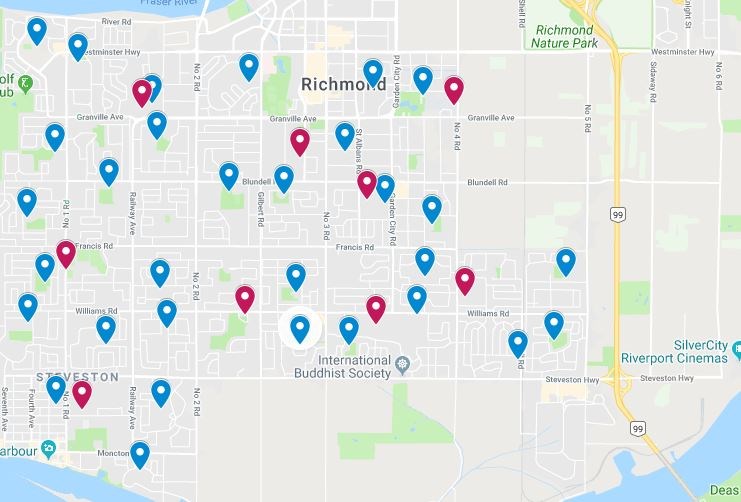*This is Part 2 of a five-part series on the school district's Long Range Facilities Plan*
Buildings in the Richmond School District need more than $173 million in repairs and upgrades, but this could take 25 years to do with the current allocation of funds.
This is just one of the findings presented in the district’s recently released Long-Range Facilities Plan (LRFP) draft report. The district is seeking feedback on the report and is hosting the first in a series of public meetings April 4 at MacNeill secondary.
Another pressing concern regarding facilities is the need for seismic upgrades to schools, according to the LRFP. Those costs are not included in the $173 million upgrades.
Thirty elementary schools and five secondary schools are considered to be at high risk in the event of an earthquake, and 24 elementary schools and four secondary schools have a high risk of liquefaction, that is, of the ground giving way during a seismic event. To upgrade these schools would require an additional $6 million to $14 million per school to cover current projects.
Kim Nowitsky, founder of Richmond Schools Stand United, has been through the LRFP process before. Her group emerged as a reaction to the LRFP of 2015 which proposed a range of school closures.
She said this time the LRFP process seems to have less pressure because there isn’t a demand from the provincial government to be at 95 per cent capacity to receive money for seismic upgrades.
On the other hand, the process is similar, she added, because it’s starting with a draft plan, a look at all facilities, but there are no specific details on what schools might close — that is expected later.
Nowitsky said she understands the school board is responsible for looking for solutions, but her issue last time round was more with the process.
“We are in favour of adequate consultation with the public and reasonable solutions,” she said.
In assessing the condition of its buildings, 47 per cent of the school district’s buildings were in the “poor” category and 43 per cent were in “fair” condition. Ten per cent are in “good” condition.
To determine the condition of a school board building, an industry standard asset management tool was used. The condition is measured by calculating the costs of any outstanding repairs or needed upgrades or renewals and comparing it to what it would cost to replace the building.
The five-year capital plan also includes requests to the ministry for expansions at four schools in Richmond, Brighouse, Talmey, Hamilton and Cook, as well as a request for a new school for 295 students at Dover Park.



